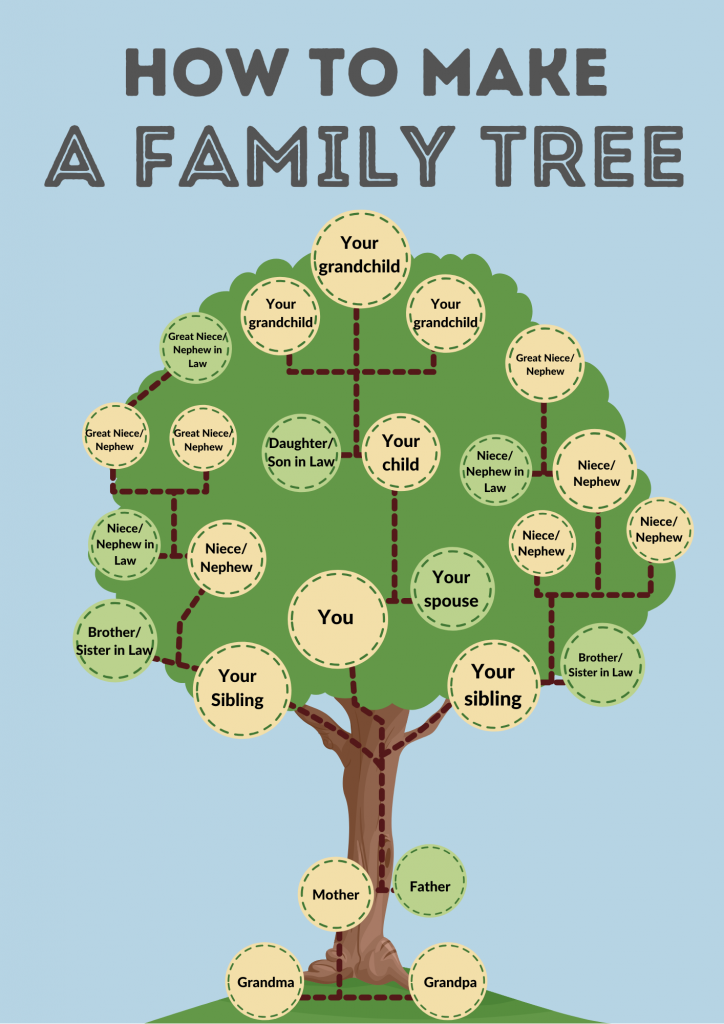You can start building your family tree even without using family tree maker software but simply by using a sheet of paper and a pencil. It is useful for several reasons: first of all, it is a draft that we could modify or even report on a dedicated program once all the data has been collected; moreover, the paper sheet can be shown more simply to grandparents and grandmothers in order to collect the missing information; and finally it is certainly more fun to draw your own tree than to insert simple data into a computer.
How to build a DIY family tree
- All you need is a very large sheet of paper (possibly A1, you can buy them on Amazon ), a pencil, and if you are a precise type even a ruler.
- Place the sheet horizontally and start from the bottom (but leaving some space) to draw 2 rectangles in which you will enter your parents ‘ names and their date of birth. At this point, you can go down a level and add more rectangles: yours and that of any brothers and sisters.
- Going down another level you will be able to add the rectangles relating to your children and the children of your brothers (or your grandchildren).
- At that point, you can add their brothers and sisters (i.e. your uncles ) to the same height as the rectangles of your parents: on the mother’s side the maternal uncles, and on the father’s side the paternal ones. Leave some space between each other to be able to add any husbands and wives.
- Up to this point, the procedure is very simple and you shouldn’t have had much trouble adding names and surnames (maybe you have struggled more with the dates of birth).
- At this point, you can go up a level and add the names of your 4 grandparents (the parents of your mother and your father) and their respective dates of birth and possibly death.
- With the same procedure done for your parents, you will also have to add the names of the respective siblings on the same level: here the situation could already become complicated because the families of the past were very numerous and each grandfather could have also had 4, 5 or even 6 siblings. . If you don’t have enough space on your sheet you can add more sheets by sticking them with tape.
- At this point, you have to decide whether to add all the children and grandchildren of your great-uncles (it could get really complicated) or choose to keep going up and only go back in time.
- If you choose to go up you will have to add another level and enter the parents of your grandparents or your 8 great-grandparents: at this point, it could start to be really difficult to find the information on the names and dates of birth and death, especially if the grandparents do not. be more alive. But with a little work and asking all the older relatives for guidance, you should be able to do it.
- At this level it is now a must to ignore the brothers of the 8 great grandparents otherwise you risk having a family tree as wide as a wall.
Usually, this is the most that can be achieved without carrying out in-depth genealogical research but simply by asking relatives for information, looking at old photographs and documents in the house.
If you want to go further back in time, first you have to make some choices or which branch of the family interests you most: usually the branch that handed down the family surname to us is preferred and therefore you will have to find the parents of the paternal great-grandfather and so on.
But you may also want to continue your search by choosing the branch of the mother or grandmother, perhaps because they belonged to families that were once noble or simply because it is easier to find information about it.
The choice is yours: in any case, if you have followed these instructions you already have a draft of the family tree that can be useful to you.
To continue you will need to go to the next step.


